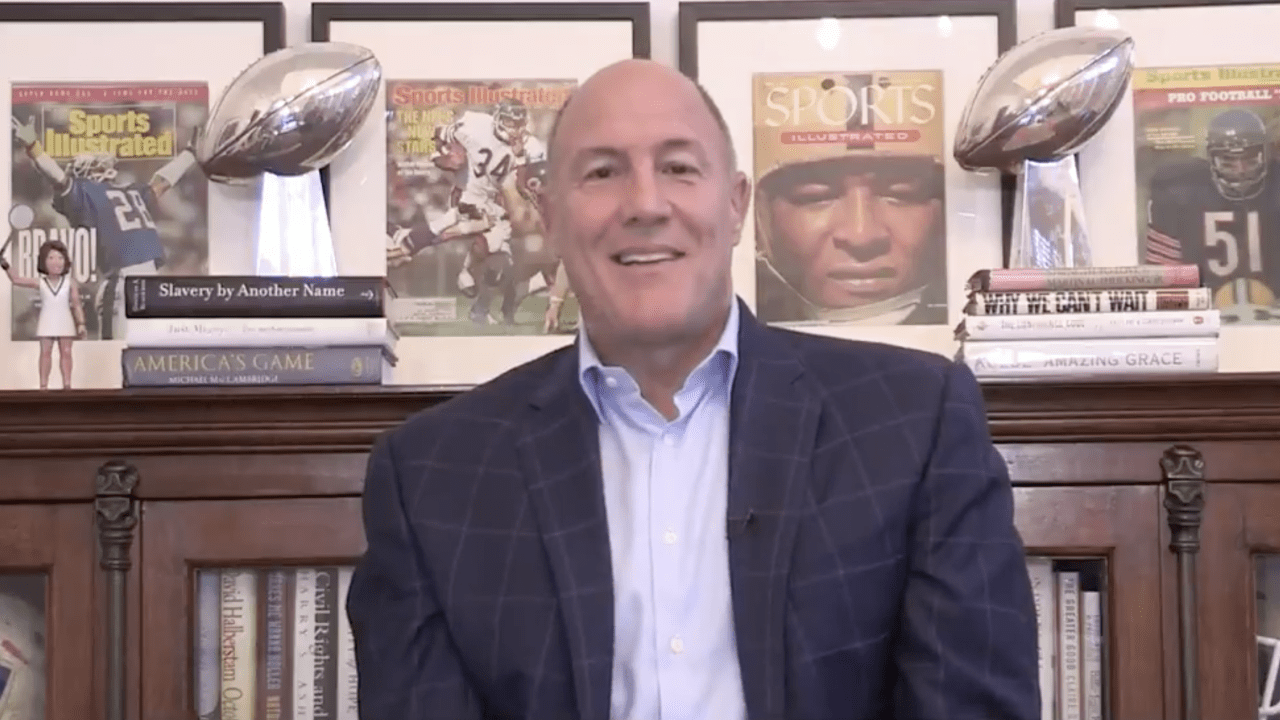
Curious about the changing selection of photos appearing behind NFL executive Scott Pioli during his appearances on NFL Network? Each image is from a framed cover of Sports Illustrated, chosen to highlight some of the lesser-known stories from football history that deserve to be widely told. For example, Pioli has focused this season on featuring some of the greats associated with historically black colleges and universities who have not been given their due.
Below, Pioli digs into the life and impact of a Black player who, though he did not attend an HBCU, left a legacy that is not discussed nearly enough: Iowa lineman Calvin Jones.
Wednesday marks the 64th anniversary of the death of one of the greatest Black football players the NFL never got to see.
I've encountered few people who can identify the football legend on the cover of the Sept. 27, 1954 issue of Sports Illustrated. The cover is one of my most prized among my collection, a tight shot of a player wearing a helmet without a facemask. And it's often rotated into my set, because anyone who loves football needs to know who Calvin Jones was and what he stood for -- and what the world lost with his tragic passing on Dec. 9, 1956.
The first time I had his cover in my background, no one working with me recognized Jones or knew who he was when I shared his name. And they're not alone. In fact, this cover stumps even some of the best football people I know. Except for my good friend and former co-worker, Pat Stewart, the current director of player personnel for the Carolina Panthers who I knew from my days in New England, when he was an entry-level scouting assistant. Shortly after that appearance on NFL Network's Good Morning Football, I received a long, information-packed text from Stew, who is from the same hometown as Jones, Steubenville, Ohio.
Stew, who said Calvin is the namesake of his and his wife Whitney's second son, knew the story of how Jones decommitted from Ohio State (Stew's alma mater), spurning Woody Hayes to attend Iowa. A two-way starter on the 1951 Steubenville High School football team that won the UPI Ohio state championship, Jones was the Ohio Lineman of the Year, Hayes' most coveted in-state recruit in 1952. And yet, Jones ended up doing the unthinkable, following his two childhood and high school teammates to the University of Iowa. This decision, detailed in the Richland Source, set off an immediate investigation by the Big Ten. When questioned by the Big Ten, Jones told them this:
"I'll tell you why I came here. They treated me like a white man. I like it here. I'm going to stay."
It was not the last time Jones proved himself to be a man of principle.
While at Iowa, Jones had the kind of football success that borders on the unbelievable, considering the era he played in. Through three seasons, he was named All-American three times, becoming the first Hawkeye to ever accomplish such a feat. In 1954, he became the first black athlete to grace the cover of Sports Illustrated, in the magazine's seventh issue, and in 1955, he became the first black player to win the Outland Trophy.
Alex Karras, a Pro Football Hall of Famer who was teammates with Jones, said Jones "was the greatest college football player I ever saw. Calvin had phenomenal reactions. I'd never seen a man hustle like he hustled."
After his dominant college career, Jones was selected by the Detroit Lions in the 1956 NFL Draft ... in the ninth-round. No, you're not reading that wrong; Jones was selected in the ninth-round. Consider that Karras, who was slightly less decorated than Jones, went on to be drafted in the first round (10th overall) in 1958.
Beyond Jones' inexplicable draft status, it is reported that black players in the NFL were not receiving equal pay at that point. Instead of signing with the NFL team that drafted him, Jones stood up in the face of racism. He chose to sign in Canada with the Winnipeg Blue Bombers.
As a rookie, Jones was named All League and played in the first ever Canadian All-Star game on Dec. 8, 1956 (the league was not yet named the Canadian Football League). The next day, Jones boarded a flight to fly back to Winnipeg, to gather his belongings before traveling back to the United States to see his Hawkeyes play in the Rose Bowl for their first appearance. Tragically, his commercial flight crashed in a Canadian mountain range before he could get to Winnipeg on Dec. 9, 1956.
"football" - Google News
December 08, 2020 at 12:07PM
https://ift.tt/3qLeTYP
Honoring Calvin Jones' life and legacy on anniversary of football legend's death - NFL.com
"football" - Google News
https://ift.tt/2ST7s35
Shoes Man Tutorial
Pos News Update
Meme Update
Korean Entertainment News
Japan News Update
Bagikan Berita Ini
















0 Response to "Honoring Calvin Jones' life and legacy on anniversary of football legend's death - NFL.com"
Posting Komentar